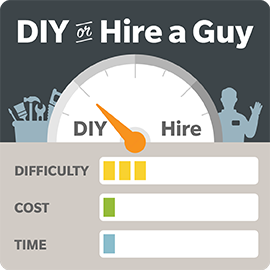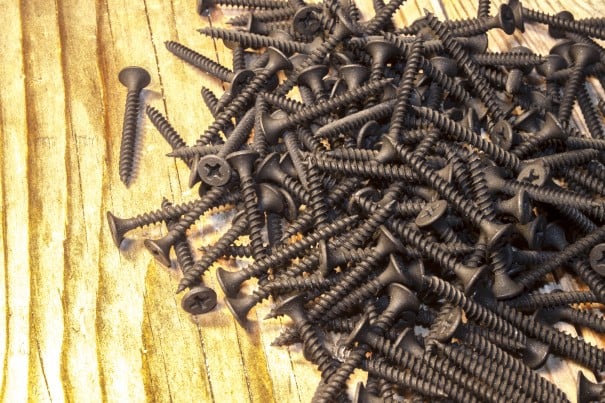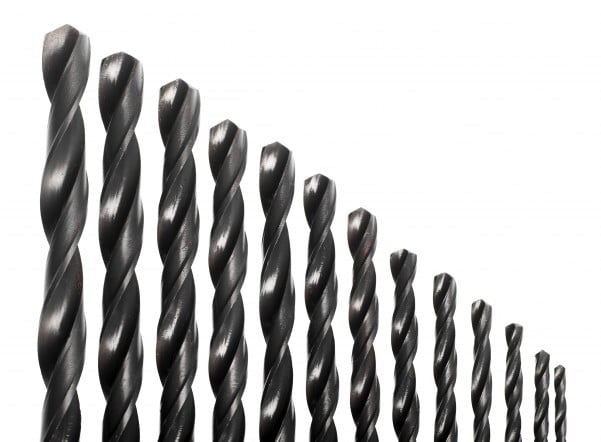
Do you know how to select the correct screw for your home projects? The wrong choice could cost you time and money. Use this guide to help you decide whether you’ll DIY or hire a guy.
Materials Required:
- Material to place the screws into
- Electric drill
- Selection of screws
Steps to Choosing the Correct Screw:
- Select a style. Screws come in a variety of styles — flat head, Phillips, square and torque. Square and torque heads make it easier to keep your drill bits in place and prevent slipping and stripping.
- Select a screw size. Choose a thickness that works for the width of the material you’re placing the screw into, as well as the weight the screw may support.
- Determine the correct screw length. Choose a length based on the depth of the material you are placing the screw into. Again, factor in the weight of the material the screw may support.
HomeAdvisor Tip:
There are a variety of screws for a variety of applications. If you get stuck,
ask for help.
The success of a project depends in part on using the right materials. Choosing the right screw can mean the difference between a successful project and a project that has to be redone. This guide will help you make the right screw selection.

What Type of Project Are You Doing?
Screws are carefully designed to serve specific functions. To choose the right screw, you have to know exactly what kind of project you’re tackling and exactly what materials are involved. Screws are first organized according to the material on which they can be used. These are some of the most commonly used types of screws:
- Sheet metal screws: These are usually threaded all the way to the head; there is no interruption in the threading. Some have self-tapping tips and some have self-drilling tips; this is convenient if you have not already created drill holes.
- Drywall screws: These can be identified by the obvious curve on the junction connecting the head to the shaft. This curve prevents tearing when the screw is applied to drywall. Coarse- and fine-thread versions are available. Use coarse threads for attaching drywall to wood shafts and fine threads for connecting drywall to metal shafts.
- Wood screws: These screws are relatively coarse. They have larger spaces between the threads than sheet metal screws do. Larger wood screws feature an unthreaded shank near the head. Sometimes, wood screws have a slight taper from tip to head.

What’s The Most Common Size?
A screw’s diameter is called its gauge. The most common gauges are between 2 and 16 in diameter. An 8-gauge screw is a good general-purpose size. Heavy materials require a gauge of 12 to 14. Fine applications, such as woodworking, may require a 6.
Steps to Selecting a Screw
- Select the screw style. Square and torque head screws are great fits for power drills; flathead and Phillips styles work well too.
- Select the screw gauge. This depends in part on the width of the material into which you are screwing and the weight that the screw will support. Stouter screws will hold more weight but have to be anchored in more material.
- Select a screw approximately half the length of the material it’s going into. A screw less than half the length of the material it’s going into will not anchor properly; go much longer than half the length and you risk damaging the opposite side of your material.
The three fundamental qualities of a screw are its gauge, its length and the material on which it can be used. Remember these guidelines and you’ll choose the right screws each time.


Hello-
I am attaching a new section 24″x48″ of thin aluminum (.024 thick) to an aluminum roof of the same thickness. The aluminum roofing material lays on top of 2″ rigid foam, so there is nothing to screw into. The connection will have to be made through the new section of aluminum, INTO, (or through) the aluminum roof material.
Can you please recommend a screw type, and length, and why?
Thank You,
John Tschogl
Dana Point CA
You should use a wingnut. Or you could use a bolt of some kind with a flat large diameter metal washer.